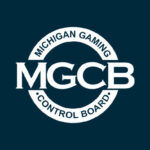Ontario’s iGaming Success Inspires Canadian Provincial Reforms
Gambling involves financial risk and may not be suitable for all individuals. Gambling industry experts create our content for informational purposes only. We may receive commissions from affiliate links at no cost to you, but our reviews remain independent and unbiased. We're committed to responsible gambling practices and transparent recommendations. About Us

Ontario’s regulated iGaming market, launched in April 2022, has become a blueprint for Canadian provinces seeking to combat black-market gambling while boosting tax revenue. With $63.3 billion in wagers and $2.2 billion in revenue in FY2023–24, Ontario’s success has spurred Alberta, British Columbia, and others to adopt similar models.
Key Takeaways
- Ontario’s regulated iGaming market generated $63.3 billion in wagers and $2.2 billion in revenue in FY2023-24
- The province’s dual oversight model separates regulation (AGCO) from commercial operations (iGaming Ontario)
- Over 50 private operators including BetMGM and DraftKings have entered the Ontario market
- Alberta has introduced Bill 48 to establish a similar framework with the Alberta iGaming Corporation
- The Canadian iGaming market is projected to reach C$5.86 billion by 2026, with Ontario capturing 50% of revenue
Ontario’s Regulatory Model
Three years after its launch, Ontario’s regulated iGaming market has matured into a sophisticated ecosystem that balances commercial opportunity with consumer protection. The province’s approach has proven both financially successful and effective at channeling players away from unregulated alternatives.
Key Components
Ontario’s regulatory structure employs a distinctive dual oversight model that separates regulatory functions from commercial operations:
Alcohol and Gaming Commission of Ontario (AGCO): This independent regulatory body establishes and enforces standards for game integrity, anti-money laundering (AML) protocols, and responsible gambling measures. The AGCO’s standards-based approach focuses on outcomes rather than prescriptive requirements, allowing operators flexibility in how they achieve compliance objectives.
iGaming Ontario (iGO): This subsidiary of the AGCO manages commercial partnerships with private operators, currently numbering more than 50 platforms including major brands like BetMGM, DraftKings, and FanDuel. iGO serves as the contractual entity that enables private companies to operate legally within Ontario’s framework.
This separation of regulatory and commercial functions has been cited as a key factor in Ontario’s success, allowing each entity to focus on its core mission without conflicts of interest. Recent legislation, the iGaming Ontario Act of 2024, has further strengthened this separation by establishing iGO as a fully independent entity from AGCO.
“Ontario’s dual oversight model represents significant regulatory innovation,” explains gaming law expert Jennifer Smith. “By separating the roles of rule-maker and commercial partner, the province has created clear lines of accountability while maintaining a cohesive regulatory approach.”
The financial structure of Ontario’s model involves a revenue-sharing arrangement where operators deposit player funds into iGO-managed accounts, with the province taking approximately 20% of gross gaming revenue. This arrangement provides stable government income while allowing operators sufficient margin to compete effectively with unregulated alternatives.
Consumer protections form a central pillar of Ontario’s framework, with mandatory self-exclusion tools, responsible gambling certifications (RG Check), and strict advertising restrictions that prohibit targeting vulnerable populations or making unrealistic claims about winning prospects.
Performance Highlights
Ontario’s iGaming market has demonstrated remarkable financial performance, with continued growth three years after launch. The most recent quarterly data from Q1 2025 shows $7.84 billion in wagers, with slots driving 73% of revenue, followed by live dealer games and sports betting.
The sector’s economic impact extends beyond direct gambling revenue. According to an economic impact study commissioned by iGaming Ontario, it contributed approximately $2.7 billion to Ontario’s GDP and created an estimated 15,000 jobs in 2024.
The player base has stabilized at around 1.9 million active accounts, with average monthly spending of $308 per player. This figure represents a sustainable level of gambling activity that generates significant revenue without indicating widespread problematic gambling behavior.
Paul Burns, CEO of the Canadian Gaming Association, notes the market’s maturation: “Ontario’s regulated iGaming market has evolved from its initial launch phase to a stable, sustainable ecosystem with a diverse range of operators. The continuity of growth three years post-launch demonstrates the long-term viability of this regulatory approach.”
Provincial Adoption
Ontario’s evident success has prompted other Canadian provinces to reconsider their approach to online gambling, with Alberta leading the charge toward regulatory reform.
Alberta’s Bill 48
In March 2025, Alberta introduced the iGaming Alberta Act (Bill 48), which closely mirrors Ontario’s regulatory framework while incorporating lessons learned from that province’s implementation experience.
The legislation establishes the Alberta iGaming Corporation as a new entity to oversee private operators, similar to Ontario’s iGO. The Alberta Gaming, Liquor and Cannabis Commission (AGLC) will retain its regulatory functions, maintaining a separation between regulatory and commercial roles.
A cornerstone of Alberta’s approach is a centralized self-exclusion system scheduled to launch in 2026, which will allow players to exclude themselves from all licensed platforms through a single registration process. This system addresses a key consumer protection gap in the province’s current gambling landscape.
Revenue projections for Alberta’s initiative are substantial, with officials estimating C$500 million in annual revenue by 2027. This figure represents funds that would largely be reclaimed from offshore sites currently operating without provincial oversight or taxation.
“Alberta’s approach builds directly on Ontario’s successful model while incorporating refinements based on that province’s experience,” states Michael Thompson, Alberta’s Minister of Finance. “We’ve studied the Ontario rollout closely and believe our framework preserves the strengths of their approach while addressing potential improvement areas.”
Industry observers note that Alberta’s model includes stronger revenue-sharing provisions with First Nations communities, addressing a criticism that emerged during Ontario’s implementation. These provisions aim to ensure that Indigenous communities benefit equitably from gambling expansion.
British Columbia and Quebec
Other provinces are at various stages of regulatory reconsideration, with approaches ranging from cautious exploration to active planning.
British Columbia is exploring potential partnerships with Ontario to share player liquidity for poker, which would create larger player pools and more competitive offerings. Such cross-provincial cooperation could address the scale limitations that smaller Canadian provinces face when considering Ontario-style models.
Quebec has thus far maintained its more conservative approach, with the state monopoly Loto-Québec retaining exclusive rights to offer online gambling. However, political pressure is building for liberalization, driven by awareness of the substantial revenue being captured by Ontario’s model and concerns about Quebec residents gambling on unregulated sites.
“We’re observing a domino effect across Canadian provinces,” notes gambling industry analyst David Roberts. “Ontario’s success has shifted the policy discussion from whether to regulate private operators to how best to implement such regulation. The question is no longer if other provinces will follow Ontario’s lead, but when and with what specific adaptations.”
Challenges and Outlook
Despite its success, Ontario’s model faces several challenges that other provinces must consider as they develop their own frameworks.
Market Saturation
With more than 50 licensed operators, Ontario’s market shows signs of potential oversaturation, raising questions about long-term sustainability. Smaller brands have reported challenges in achieving profitability amid intense competition, suggesting that consolidation may occur in coming years.
This dynamic creates a dilemma for following provinces: replicating Ontario’s open approach may lead to similar saturation issues, while limiting licenses could reduce competitive benefits and innovation. Alberta has indicated it will take a more measured approach to operator licensing, potentially limiting initial market access to established brands with proven compliance records.
First Nations Concerns
Alberta’s legislation has faced scrutiny regarding revenue sharing with Indigenous communities, highlighting a complex issue in Canadian gambling regulation. First Nations groups have argued that provincial gambling expansion impacts their rights under existing gaming compacts and treaties.
These concerns reflect broader questions about how gambling revenue should be distributed among different governmental entities and stakeholders. Ontario’s initial implementation faced similar criticism, prompting Alberta to incorporate more explicit revenue-sharing provisions in its framework.
Federal Compliance
Questions persist about whether provincial models adequately meet Canada’s Criminal Code “conduct and manage” threshold, which requires substantial provincial involvement in gambling operations rather than mere licensing and regulation.
Ontario has defended its model as compliant with federal requirements, but legal challenges remain possible. The structure of revenue collection and the degree of operational control exercised by provincial entities represent key considerations in this ongoing legal discussion.
Industry legal expert Michael Davis explains: “The ‘conduct and manage’ requirement creates a uniquely Canadian regulatory challenge. Provincial frameworks must balance providing operators commercial freedom while maintaining sufficient governmental involvement to satisfy federal law. Ontario’s model attempts this balance through its revenue model and oversight structure.”
Market Projections and Conclusion
By 2026, Canada’s iGaming market is projected to reach C$5.86 billion, with Ontario expected to capture approximately 50% of this revenue. Alberta’s reforms could position it as the second-largest regulated market, potentially accounting for 20-25% of the national total if implementation proceeds as planned.
Other provinces continue to weigh regulatory modernization against public health priorities, creating a patchwork approach to iGaming across Canada. This fragmentation presents challenges for operators seeking national scale but also creates opportunities for provinces to learn from each other’s experiences.
“Ontario’s model has fundamentally changed the Canadian gambling landscape,” concludes Burns. “Three years ago, most provinces maintained strict monopoly approaches despite widespread offshore gambling. Today, we’re seeing a shift toward regulated competition that acknowledges market realities while enhancing consumer protections and generating public revenue.”
As Alberta advances its regulatory framework and other provinces consider similar reforms, Ontario’s pioneering approach continues to provide valuable implementation lessons. The province’s ability to sustain growth while maintaining responsible gambling standards offers a compelling case study for jurisdictions worldwide considering similar regulatory modernization.
For Canadian gamblers, these reforms promise expanded access to regulated platforms with consistent consumer protections, regardless of provincial boundaries. For provincial governments, they offer a template to recapture revenue currently flowing to offshore operators while addressing public health concerns through comprehensive responsible gambling measures.

















